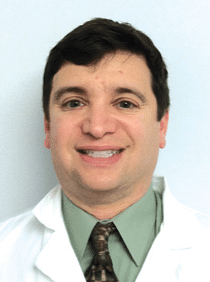
More Heart Disease, Stroke and Diabetes Articles
TMJ Disorders
More than 15% of American adults suffer from chronic facial pain. Some common symptoms include pain in or around the ear, tenderness of the jaw, clicking or popping noises when opening the mouth, or even headaches and neck aches.
Two joints and several jaw muscles make it possible to open and close the mouth. They work together when you chew, speak, and swallow. These structures include muscles and ligaments, as well as the jaw bone, the mandible (lower jaw) with two joints, the TMJ's.
The TM joint is one of the most complex joints in the body. Located on each side of the head, these joints work together and can make many different movements, including a combination of rotating and a gliding action, used when chewing and speaking.
A dentist can help identify the source of the pain with a thorough exam and appropriate x-rays. Often, it's a sinus, toothache or an early stage of periodontal disease. But for some pain, the cause is not so easily diagnosed. The pain could be related to the facial muscles, the jaw or temporomandibular joint, located in the front of the ear. Treatments for this pain may include stress reducing exercises, muscle relaxants, or wearing a mouth protector to prevent teeth grinding. They've been successful for many and your dentist can recommend which is best for you.
Some TM problems result from arthritis, dislocation, and injury. All of these conditions can cause pain and dysfunction. Muscles that move the joints are also subject to injury and disease. Injuries to the jaw, head or neck, and diseases such as arthritis, might result in some TM problems. Other factors that relate to the way the teeth fit together-the bite may cause some types of TMD. Stress is thought to be a factor. TMD affects women of childbearing age more than men, or older men and women.
Your dentist will recommend what type of treatment is needed for your particular problem or recommend that you be referred to a specialist.
Diagnosis is an important step before treatment. Part of your clinical examination includes checking the joints and muscles for tenderness, clicking, popping or difficulty moving. Your complete medical history may be reviewed, so it is important to keep your dental office record up-to-date. Depending on your case, the dentist may refer you to a physician or another dentist.
Other Articles You May Find of Interest...
- Gaining Personal Confidence and Function after Stroke Rehabilitation
- Understanding Gender Differences: Heart Attacks In Women
- Diabetic Foot Care For Summer
- Take care of heart health after 40s
- Causes and Treatments For Hypertension and Heart Attacks
- Heart Health at Your Fingertips: The Revolution of Remote Cardiac Monitoring
- Your Heart’s Best Support This Year! The 9 Pillars To Prevent Heart Disease

















